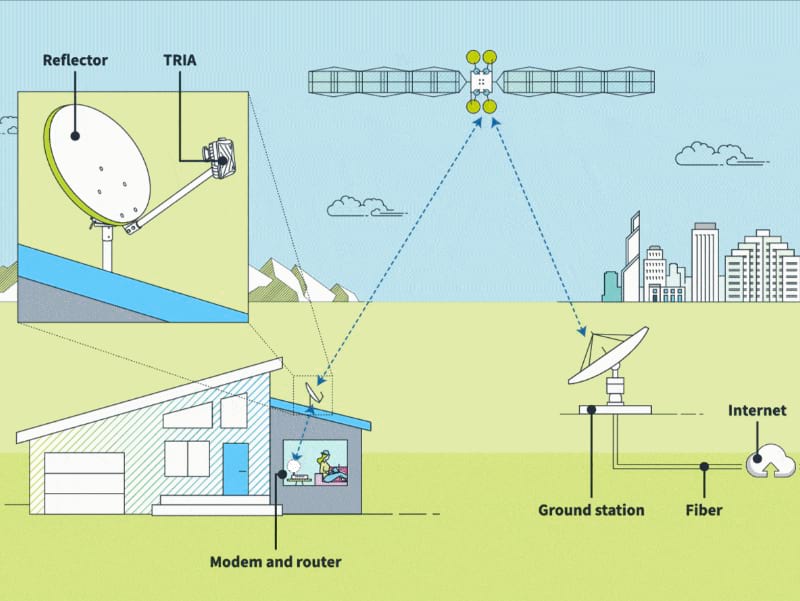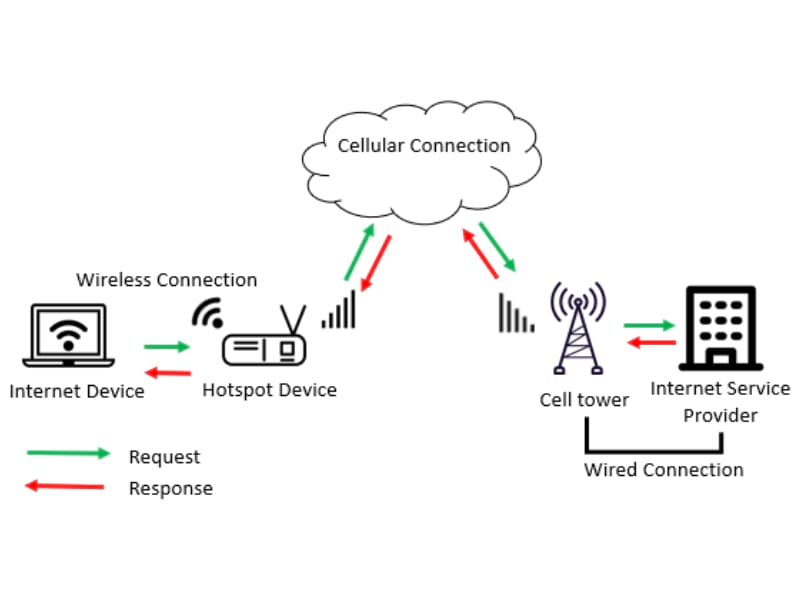
Modern lifestyle has seen the massive expansion and development of broadband access. As the applications of this system gain momentum, more and more policymakers and service providers are looking into the extension of this feature to rural and remote localities as this may be the key to multiple issues posed by distance and lack of awareness. Used as a form of entertainment, a business tool, and much more, broadband connectivity remains challenging in multiple remote places such as businesses operating outside of large towns or deep into the Serengeti.
Luckily, some types of internet access have already been identified and incrementally implemented for such cases. Before we delve into the best kinds of internet solutions for rural connectivity, let’s have a quick look at the real meaning of broadband access and how people living and operating in rural areas may benefit from it.
In simplified terms, broadband access refers to the ability to transfer large volumes of high-quality data over long distances like a typical internet connection. Broadband options usually include Wi-Fi, DSL services, satellites, and even fiber optic cables and favour Rural Connectivity. However, not all of these types of broadband connections are entirely suitable for remote locations as they rely on multiple factors such as the length of cables, cost of installation, and more.

While a large share of us have had the chance of enjoying high-speed internet as a norm, multiple people living or working in remote areas have to face the daily difficulties of life without broadband connectivity. Here are some aspects of internet access from which rural communities will definitely benefit from.
Much like urban businesses, smaller offices operating in remote locations can greatly benefit from broadband connectivity through the automation of multiple processes. While online services such as internet banking, employee payroll, direct deposits, and others, have become a common thing for us working in urban areas, people living further into the countryside may see those features as a luxury that could significantly boost their productivity, reduce their time spent commuting and enhance the Rural Connectivity accuracy of their work among other improvements.
No, we are not only talking about missing out on the latest Netflix series, studies have demonstrated that a lack of access in rural regions can have a direct impact on the quality of life of these communities. For example, it is believed that about 80% of health issues received in rural clinics could be catered for by greater awareness and the availability of online information. Similarly, broadband connectivity could open the tap to a wide range of facilities such as e-learning, e-farming, and much more for Rural Connectivity.

Yes, while weather and news updates may also be as simple as a notification on your smartphone, companies, and families in the savannah may have no access to this crucial information. For example, people relying on good weather conditions for the running of their daily activities or business attraction may be at disadvantage from the lack of internet connection.
How often do we pick up our phones or switch on our laptops to browse through social media, catch up with loved ones or share directives for a Rural Connectivity project? What may seem as easy as pressing the ‘send’ button for you may actually be much harder for rural communities.

While not limited to people working in the broadband connection industry, extending internet access to rural areas may also help the local communities by creating employment and helping families out of poverty. As the business is expected to flourish and grow when given internet access, this could mean more work power is required to cater to the developing sectors.
Satellite connection has become one of the most widespread ways of acquiring broadband access even in the most remote places. Due to its practicality, this type of system can even provide internet to the farthest locations where the installation of cables may be tricky such as on oil rigs or ships.
By installing a few pieces of equipment at your house or office, such as a router, modem, and satellite dish, you can instantly start benefiting from a fast and affordable internet connection. As indicated by its name, this type of internet uses orbiting satellites to receive and transfer data. As you make an internet search on your laptop or PC, a signal is sent to your router, and then to your modem which is connected to the dish on your roof. The signal is then sent out into space where it is intercepted by the orbiting satellites and back to your home or office computer and very important for Rural Connectivity.

While this may seem like a complex process, satellite connection is among the easiest ways of gaining broadband access as it is almost 100% wireless. This system is especially advantageous for remote locations as there is no need to install miles of copper wires or phone lines to reap its benefits.
Similar to a satellite internet installation, high-gain microwave antennas require a receiver and a router to send and capture data from the cell tower. This type of service operates by using a router or hotspot to connect to the closest cell tower in your vicinity. For remote areas, cell boosters and extenders may be necessary to enjoy a better connection depending on the distance from the main cell tower. However, HGMA usually boosts the strength of its signals by sending power to the receiver.

In addition, it is important to consider the position of your router for this type of internet. The device should usually be placed in the direction of the nearest cell tower, in a clear and open space unobstructed by bookshelves or other furniture. Large houses or offices with multiple stories may also require the use of internet extenders to spread the connection throughout the area and very important for Rural Connectivity.
A DSL or Digital Subscriber Line service works by making the most of your existing telephone line. The principle of this system relies on the fact that the cables used for your telephone connection can actually carry way more frequencies than what is actually being used.
Your DSL modem can thus be used at all times without disturbing your telephone line. While not the fastest or most reliable means of accessing the internet, DSL service is still widely available and relatively inexpensive for Rural Connectivity.
A cellular service provider may also be quite useful to access the internet when need be. Connecting to the internet using your cell service allows for relatively fast internet with low latency as long as you do not exceed your package limit or the network is not congested.
While cellular internet may not give you the speed of a satellite or optic cable connection, it can still offer decent access to the internet and its many wonders.

Contact us at Blink Ltd for your first visit and get expert advice on the best type of broadband access for your home or office requirements and Rural Connectivity.
